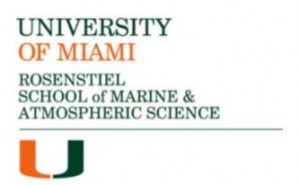Press Release by University of Miami: Effects of Ecotourism on Tiger Sharks
 Press Release
Press Release
Don’t Bite the Hand that Feeds …
Using satellite technology to evaluate the effects of ecotourism on tiger sharks
LONDON – (March 9, 2012) —
Ecotourism activities that use food to attract and concentrate wildlife for viewing have become a controversial topic in ecological studies. This debate is best exemplified by the shark dive tourism industry, a highly lucrative and booming global market. Use of chum or food to attract big sharks to areas where divers can view the dwindling populations of these animals has generated significant criticism because of the potential for ecological and behavioral impacts to the species. However, the debate has been largely rhetorical due to a lack of sufficient data to make any conclusions either way.
Five University of Miami (UM) Rosenstiel School of Marine & Atmospheric Science researchers, Drs. Neil Hammerschlag, Jerald S. Ault and Jiangang Luo, and graduate students Austin Gallagher and Julia Wester, combined efforts to tackle this issue. In a paper published in the British Ecological Society’s Functional Ecology titled, “Don’t bite the hand that feeds: Assessing ecological impacts of provisioning ecotourism on an apex marine predator,” the team conducted the first satellite tagging study to examine the long-term and long range movement patterns of tiger sharks (the largest apex predator in tropical waters) in response to dive tourism. Video commentary is available at youtube.
“We studied two separate populations of tiger sharks: one that originated in Florida and the other in the Bahamas,” says Hammerschlag. At the Bahamas site, nicknamed Tiger Beach, chum is widely used to attract sharks for dive tourism purposes. In contrast, shark feeding for ecotourism in Florida waters is illegal.
The team hypothesized that Tiger Beach sharks would exhibit restricted movements around the dive site, especially when compared to tiger sharks tagged in Florida. However, what they discovered was totally different — Tiger Beach sharks did not exhibit restricted movements near the dive site. Instead, the Bahamas sharks occupied an area over 8500 km2 in size – almost five times greater than Florida tiger sharks.
“Not only did we discover that ecotourism provisioning did not affect tiger shark behavior, we found that tiger sharks undergo previously unknown long-distance migrations up to 3,500 km into the open Atlantic. These apparent feeding forays follow the Gulf Stream, an area of high biological productivity that concentrates shark prey,” said Ault.
“Given the economic and conservation benefits we believe managers should not prevent shark diving tourism out of hand until sufficient data were to demonstrate otherwise,” added Hammerschlag.
Shark finning, the practice of catching a shark, slicing off its fins and then disposing of the body at sea, is resulting in immense shark population declines worldwide. Fins are sold to support the growing demand for shark fin soup, an Asian delicacy. In a 2011 study by UM’s Gallagher & Hammerschlag, they showed that shark dive tourism generates more money to local economies than does killing the sharks.
About UM and the R.J. Dunlap Marine Conservation Program:
The University of Miami (UM) is the largest private research institution in the southeastern United States. The University’s mission is to provide quality education, attract and retain outstanding students, support the faculty and their research, and build an endowment for University initiatives. Founded in 2009, the R.J. Dunlap Marine Conservation Program is a joint program of the Rosenstiel School of Marine & Atmospheric Science and the Leonard and Jayne Abess Center for Ecosystem Science and Policy. The Rosenstiel School offers one of largest, most comprehensive marine and atmospheric programs in the nation. The Abess Center encourages innovative interdisciplinary initiatives that bridge the gap between hard science and environmental policy. You can support us by visiting ShopforSharks.com. For more information, please visit www.rjd.miami.edu
Editor’s Note: Functional Ecology is published by Wiley-Blackwell for the British Ecological Society.
Contents lists are available at www.functionalecology.org.
![]() NOTE: You can download a PDF of the related scientific paper HERE
NOTE: You can download a PDF of the related scientific paper HERE
